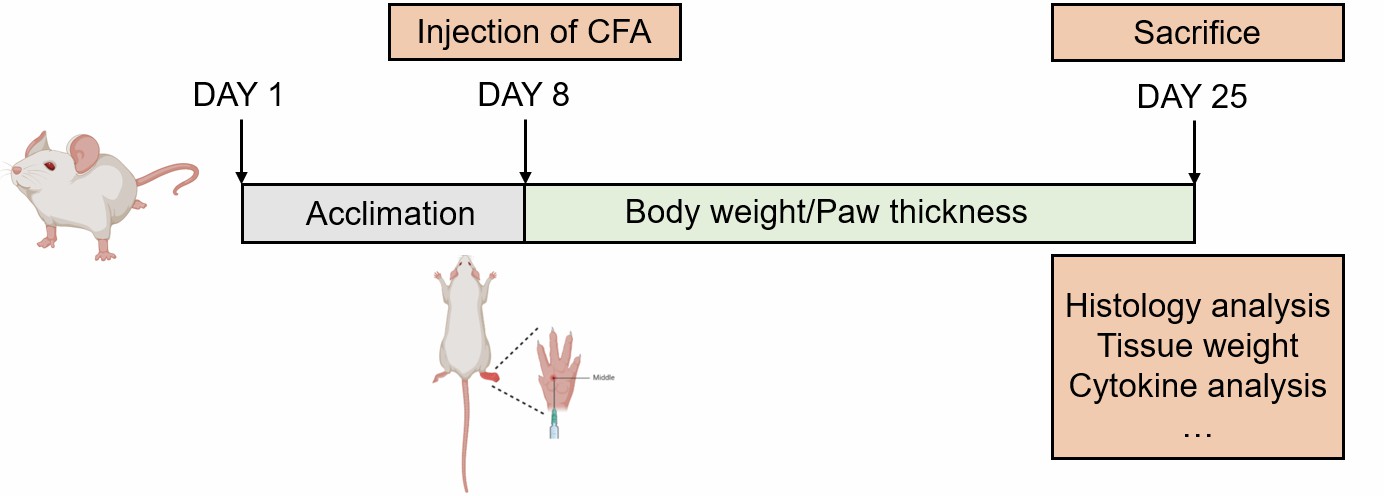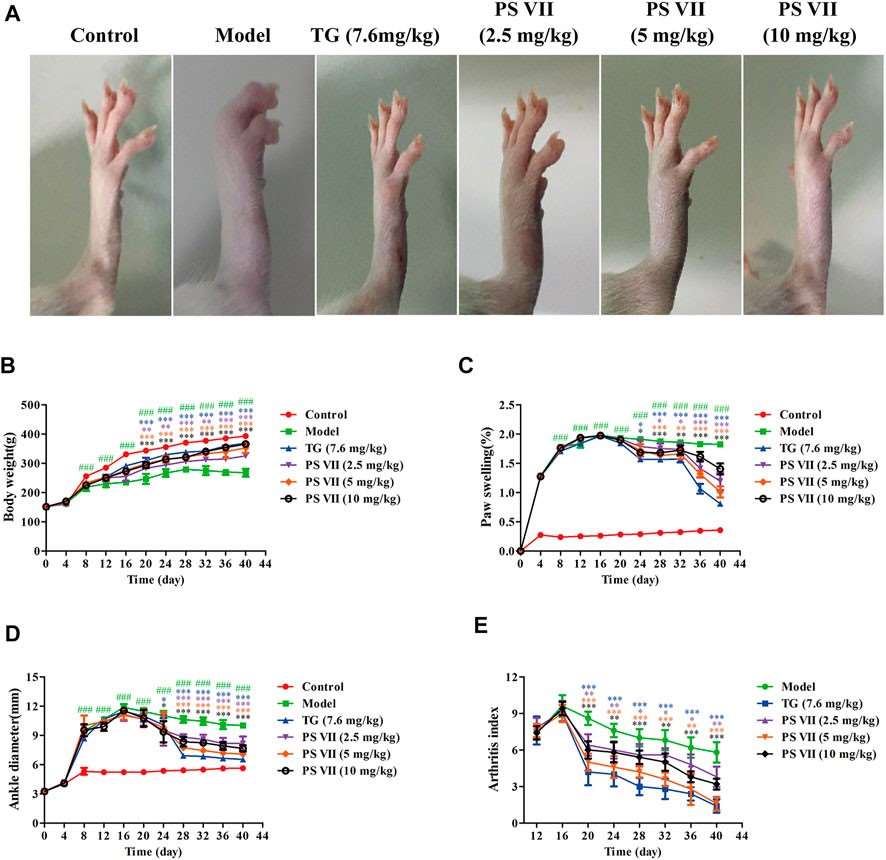Adjuvant-Induced Arthritis (AIA) Model
Creative Bioarray boasts extensive experience in rheumatoid arthritis research, having successfully developed the adjuvant-induced arthritis (AIA) model. Our company provides a comprehensive suite of preclinical animal testing services for rheumatoid arthritis to a global clientele, encompassing the development and validation of animal models, as well as the assessment of drug candidates' toxicity and efficacy in rodents.
Rheumatoid arthritis (RA) is a chronic inflammatory disease that causes joint swelling, and tenderness, and ultimately leads to the destruction of synovial joints. This can result in severe disability. While we have made progress in understanding the causes of RA and improving its treatment, some patients still do not respond well to existing medications. As a result, there is an urgent need for further investigation into the causes of RA and the development of new therapeutic approaches. The AIA model is an earlier classical RA animal model, which is widely used in the study of the pathogenesis of RA and the evaluation of anti-arthritis drugs. The bacteriologist Freund created the adjuvant-induced arthritis model in the 1950s, also called Freund's adjuvant arthritis. It is suitable for studying molecular mechanisms between T cells and subpopulations.
Our Adjuvant-Induced Arthritis (AIA) Model
- Available Animal
- Rat
- Mouse
- Modeling Method
Animals receive a subcutaneous injection of Complete Freund's Adjuvant (CFA) into the footpad of a rear paw. Severe and acute inflammation is observed within 30 minutes of the injection. The inflammation peaks within 3-4 days and lasts for 20-25 days.
 Fig. 1 Schematic diagram of the modeling method for AIA.
Fig. 1 Schematic diagram of the modeling method for AIA.
- Endpoints
- Body weight
- Tissue weight: spleen
- Cytokine analysis
- Clinical score
- Photography of paws
- Paw thickness
- Histology analysis: H&E staining
- Other customized endpoints
Example Data
 Fig. 2 Effects of PS VII on the severity of AIA rats. After the establishment of the AIA model, rats were intragastrically administered PS VII (2.5 mg/kg, 5 mg/kg, 10 mg/kg) and TG (7.6 mg/kg) every day. The control group and the model group were given an equal volume of 0.5% CMC-Na. (A) Morphological representation of the right hind paw of rats from six groups on the day 40 after CFA injection. Observe body weight (B), paw swelling (C), ankle joint diameter (D), and arthritis index (E) every 4 days. (Meng et al. 2021)
Fig. 2 Effects of PS VII on the severity of AIA rats. After the establishment of the AIA model, rats were intragastrically administered PS VII (2.5 mg/kg, 5 mg/kg, 10 mg/kg) and TG (7.6 mg/kg) every day. The control group and the model group were given an equal volume of 0.5% CMC-Na. (A) Morphological representation of the right hind paw of rats from six groups on the day 40 after CFA injection. Observe body weight (B), paw swelling (C), ankle joint diameter (D), and arthritis index (E) every 4 days. (Meng et al. 2021)
Additionally, we also provide other arthritis models that maybe you are interested in:
Quotation and Ordering
At Creative Bioarray, our team of scientists brings extensive therapeutic expertise and years of experience in model development and validation. We are committed to delivering the most reliable services to our clients, all at competitive prices. If you are interested in our services, please feel free to contact us at any time or submit an inquiry to us directly.
References
- Meng, M., et al. Anti-rheumatoid arthritic effects of Paris Saponin VII in human rheumatoid arthritis fibroblast-like Synoviocytes and adjuvant-induced arthritis in rats. Frontiers in Pharmacology, 2021, 12: 683698.
- Zhao, T., et al. How to Model Rheumatoid Arthritis in Animals: From Rodents to Non-Human Primates. Front Immunol, 2022; 13:887460. Published 2022 May 25.